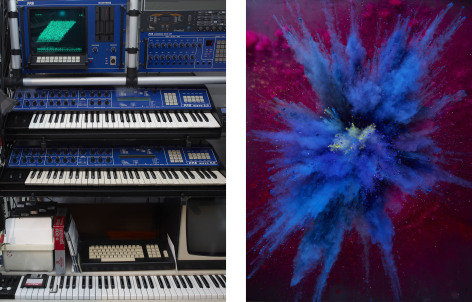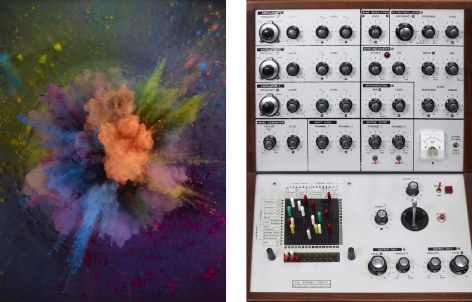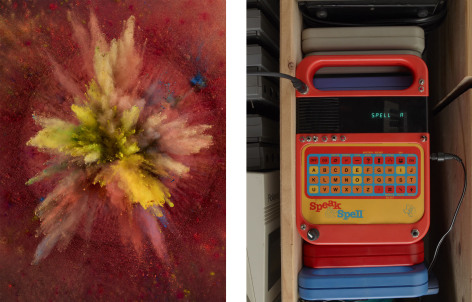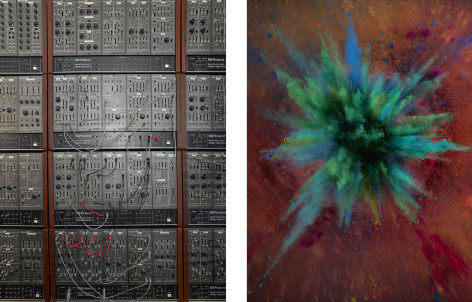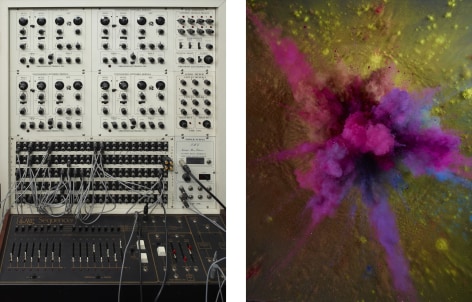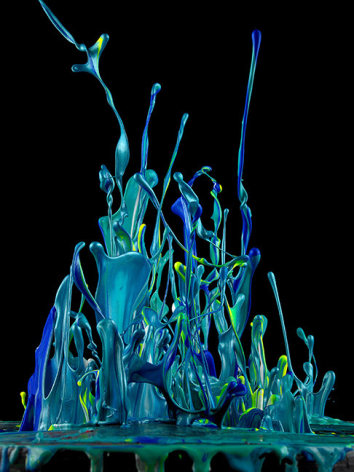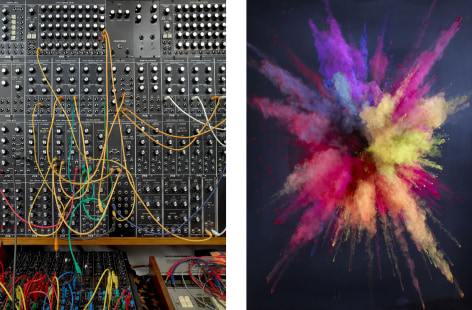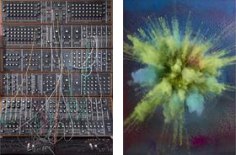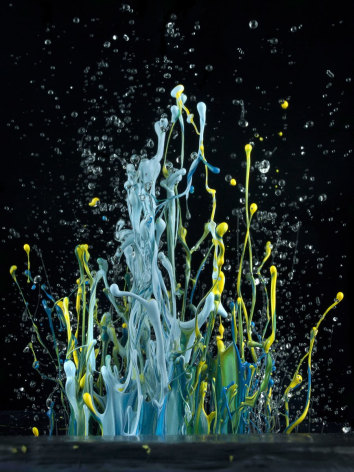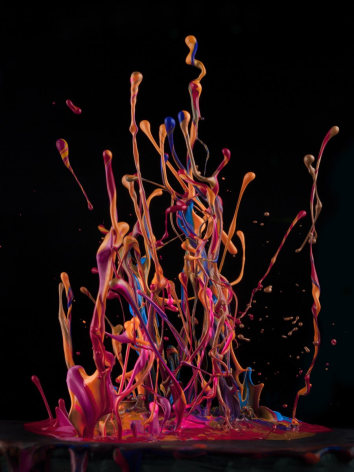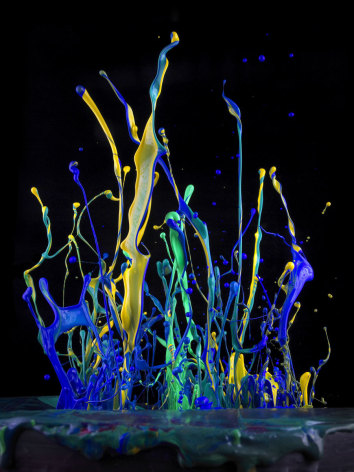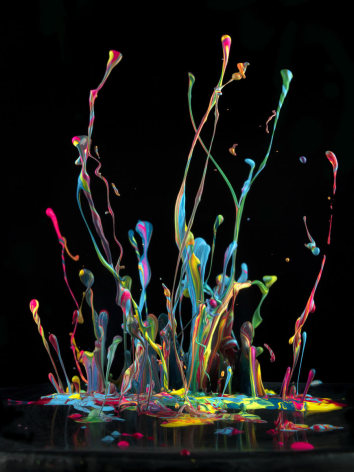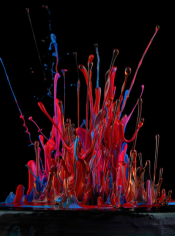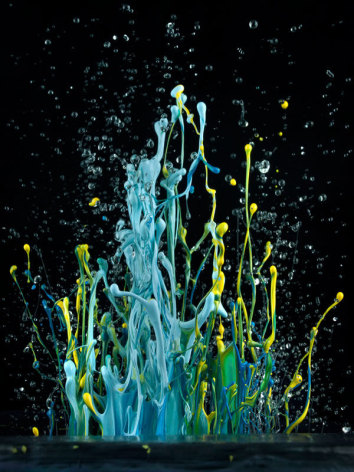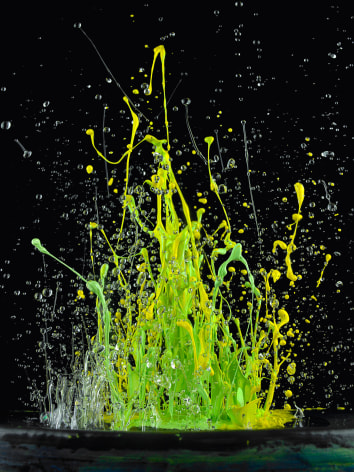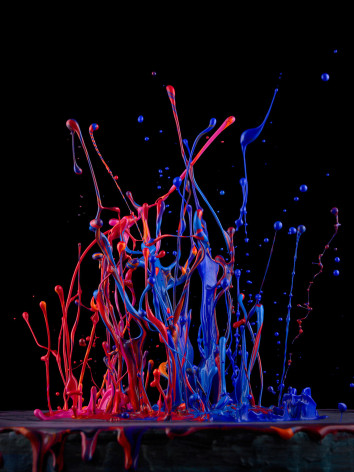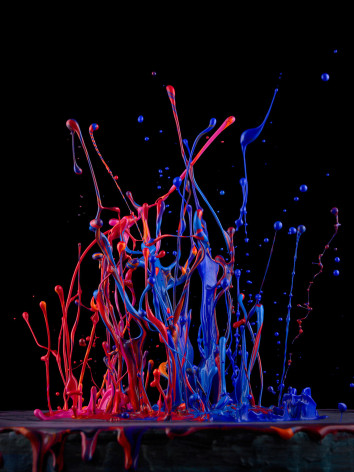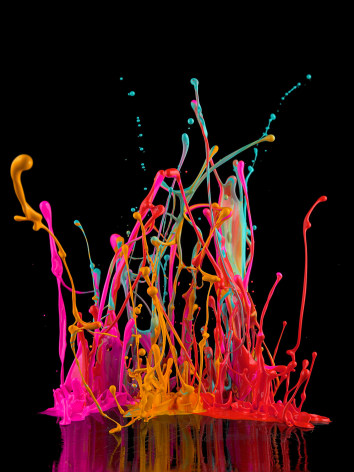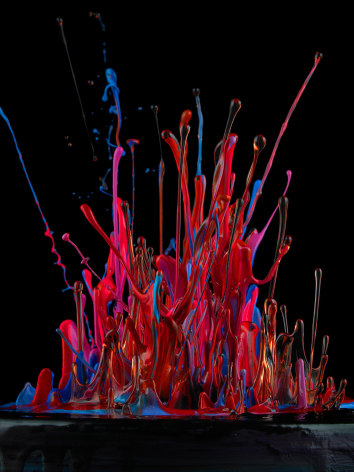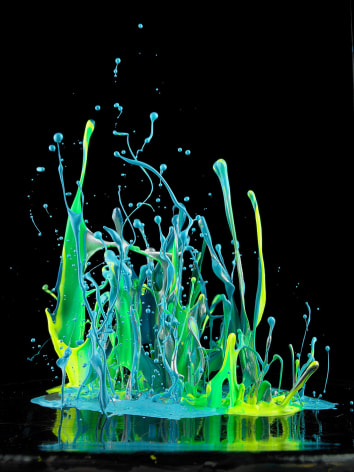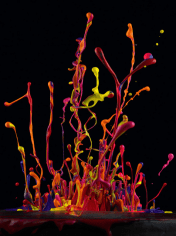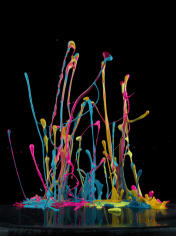FOR IMMEDIATE RELEASE:
Foley Gallery is very pleased to present Martin Klimas’ exhibition Sound Works featuring selections from several series including SONIC, Sound Explosions and Pure Tones. This will be the artist’s fourth solo exhibition with the gallery.
In Sound Works, Klimas continues to explore the question, “What does sound look like?”, translating sound to a single moment that we can actually see. In SONIC, he uses well-known songs by musicians such as Miles Davis or Daft Punk. In Sound Explosions, Klimas uses original compositions. In collaboration with several musicians, Klimas asked that they create “patches” of sound using analogue synthesizers. The synthesizers—made between 1930 and 1990—are presented as to prologue the intricate vibrations of sound, which he animates with powdered pigments. Reflection, interference, refraction and diffraction: basic wave phenomena generate the differences in sound that we can hear as a beat. To create the images, he places a scrim over the speaker diaphragm and carefully places the chosen pigments for the sound reaction. Then, using high-speed camera technology, he captures the kaleidoscopic chaos that appears when the sound begins. Each pigment abstraction will be paired with its photographic counterpart; a detail of the machine that created it.
The artist removes organized sound, or beats, in his series Pure Tones. Here he employs a frequency generator, outputting the most basic building blocks of music. Sine tones are used to stimulate the surface of water and Klimas photographs the resulting “standing waves”. Some of these photographs will be displayed as lenticular prints, giving the viewer a four-faced view of each tone.
Precision, accuracy and exact planning of his scientifically set-up compositions are what make Martin Klimas’ image series so unique and impressive. With his way of working, Klimas constantly wanders between art and science.
Martin Klimas received his diploma of visual communication from the Fachhochschule Düsseldorf in 2000. His photography has appeared in The New York Times Magazine and has been exhibited in galleries, museums and fairs throughout Germany, abroad and in the United States including a solo exhibition at The Andy Warhol Museum in spring 2008. Martin Klimas currently lives and works in Düsseldorf, Germany.
Sound Works will remain on view through May 22, 2016. Foley Gallery is open Wednesday through Saturday, 11 – 6pm and Sunday 12 - 6. To request images, please contact the gallery at 212.244.9081 or info@foleygallery.com.
- - - - - - - - - - - - - - - - - - -
Amie Cunat
A response to the gallery’s repurposed store-front windows by artist Amie Cunat will be displayed at the entrance. Textual language and scribbles, dually referring to marks or strokes of paint, largely influence the imagery within the abstract paintings and sculptures. “I am interested in creating an experience that not only conducts a feeling of playfulness among the zig-zagged, lyrical forms, but one that is also chromatically vibrant.”

